Thanks to our staff, partners, and community of supporters, NTBG celebrated many wins for tropical plants this year. With each discovery, initiative, and innovation, we are growing a brighter future for generations of plants and people. We’re excited to share these conservation highlights with you.
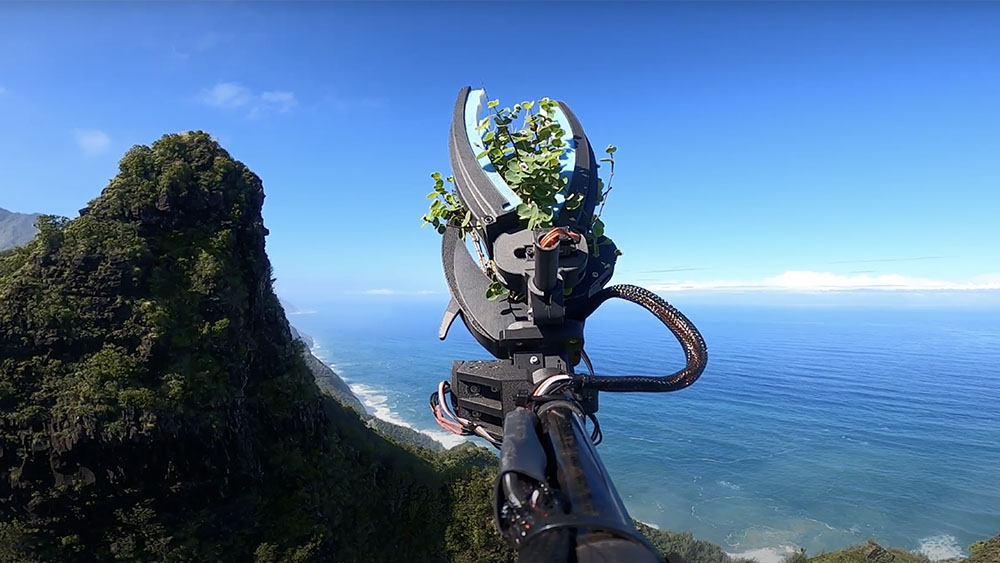
The Mamba collecting ʻakoko (Euphrobia eleanoriae) in Limahuli Valley. Thanks to our partners at Outreach Robotics and the University of Sherbrooke for the amazing footage.
In addition to discovering endangered plants, our drone program is now able to safely collect them. The Mamba, a tool developed by Outreach Robotics and University of Sherbrooke researchers with the support of NTBG scientists, has collected 12 endangered species on Kauaʻi so far. Their progress was published in the journal Nature – Scientific Reports, documenting how the new technology is redefining plant conservation on cliffs and other extreme habitats. Check out the latest press coverage on the Mamba drone arm from Reuters and Scientific American.
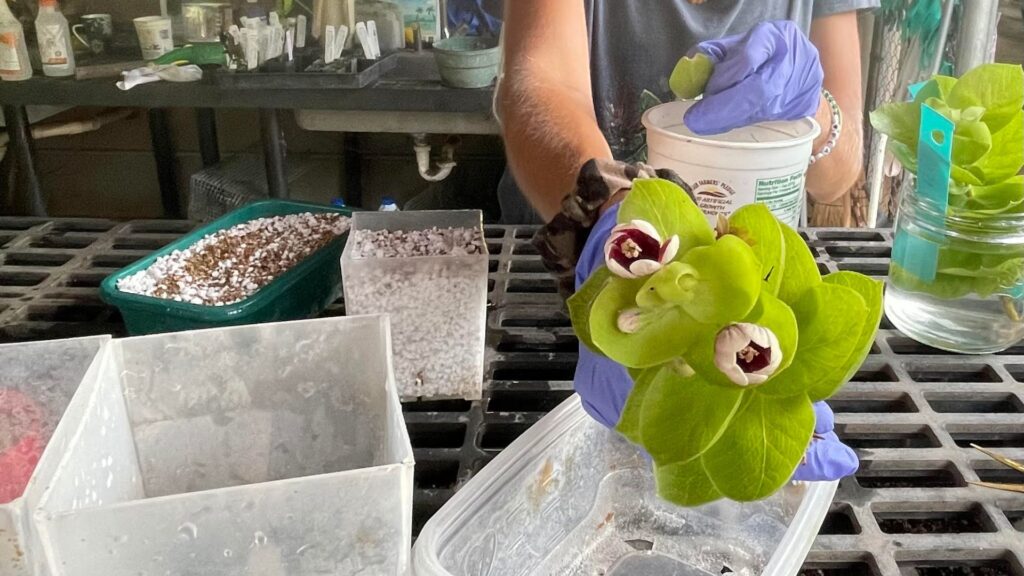
Fresh Lysimachia iniki cutting being processed in NTBG’s Conservation Nursery
Hope takes root for Kauaʻi’s rare plants
This summer, our Conservation Nursery celebrated as three different critically endangered plants collected by the Mamba set roots – laukahi (Plantago princeps var. anomala), ʻakoko (Euphorbia eleanoriae), and Lysimachia iniki.
While NTBG has previously attempted to propagate cuttings of L. iniki and ʻakoko, it was the first known attempt to do so with laukahi. The successful rooting of all three species is an inspiring accomplishment for the Mamba field collection and nursery teams, providing further proof that new technology can advance rare plant conservation. Read the full story from the Conservation Nursery team.
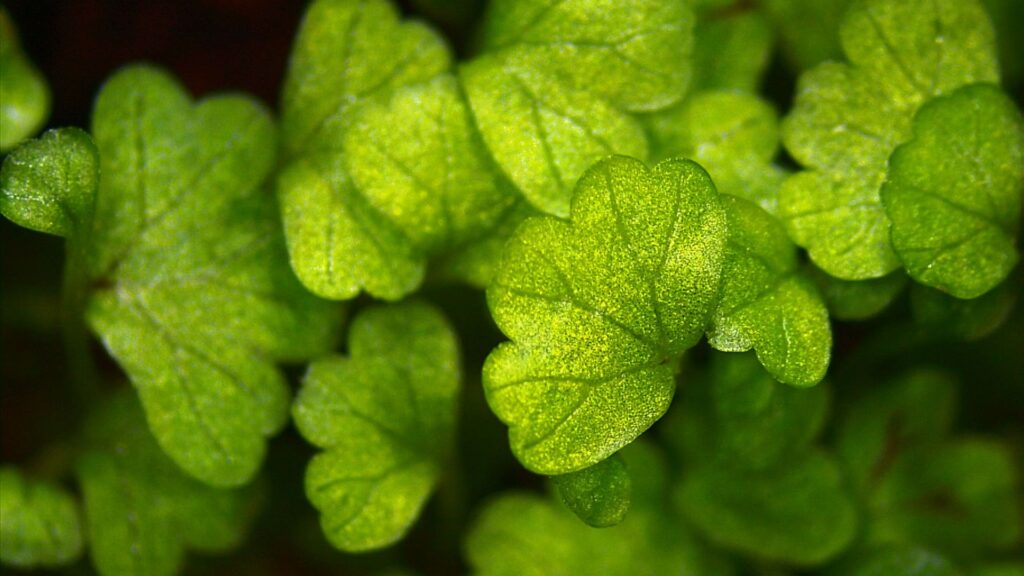
Pteris hillebrandii
Our Fern Lab has made exciting progress in the cultivation of rare Hawaiian ferns this year. Spores were collected from herbarium vouchers (pressed plants that are preserved and stored for research). While plants are dried, pressed, and stored in the herbarium vouchering process, the hope was that rare fern spores might still be able to germinate under the right conditions. The experiment was a success! Some spores collected off the herbarium sheets dated back to 1985. Staff hope to continue to see growth and have mature plants soon. Advances like this would not have been possible without supporters like you! Your fundraising directly contributed to the hiring of a full-time Fern Lab Technician, Emily Sezate.
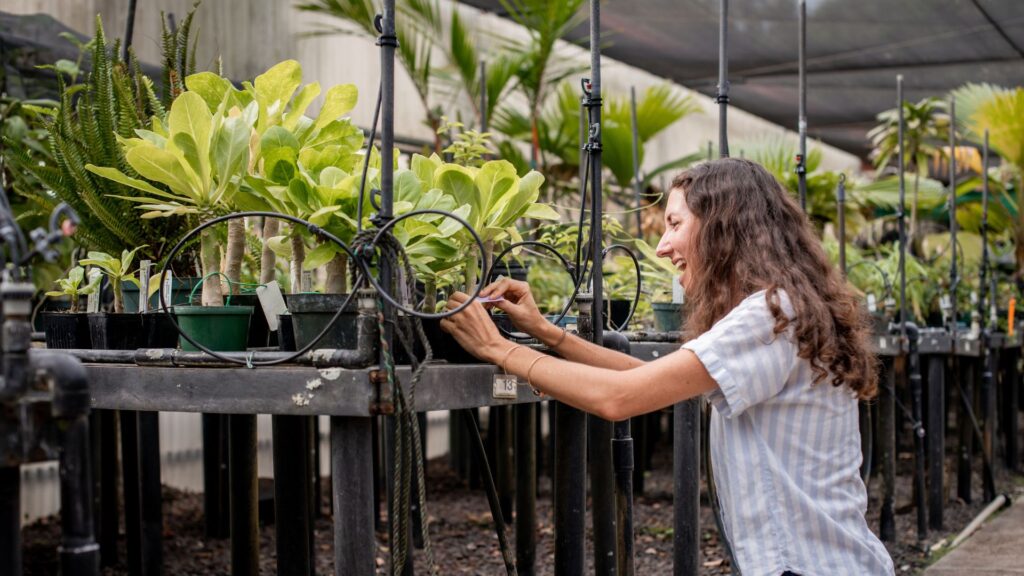
Seana Walsh, Conservation Biologist, inspecting ʻālula (Brighamia insignis) in NTBG’s Conservation Nursery
As part of a collaborative project with Botanic Gardens Conservation International and Chicago Botanic Garden, hundreds of ʻālula (Brighamia insignis) were planted at McBryde Garden and Limahuli Garden this year. For the last two years, NTBG and Chicago Botanic Garden have been conducting crosses and monitoring seed viability and plant growth for a National Geographic Society-funded project titled “Saving the remaining genetic diversity of species that are extinct in the wild: resurrecting Brighamia insignis.” This ex situ collection was set up to monitor the survival and growth of plants with different levels of genetic diversity, which will help inform how we move forward with in situ restorations of plants like ʻālula. As with animals, plants are healthier when bred in diverse gene pools. To expand the scope of this approach, NTBG is partnering with Chicago Botanic Garden on a new grant. Conservation biologist Seana Walsh will focus on building genetically diverse collections of Critically Endangered Hawaiian endemic species kokiʻo ula (Hibiscus clayi) and hōlei (Ochrosia kauaiensis). Walder Foundation is funding this project.
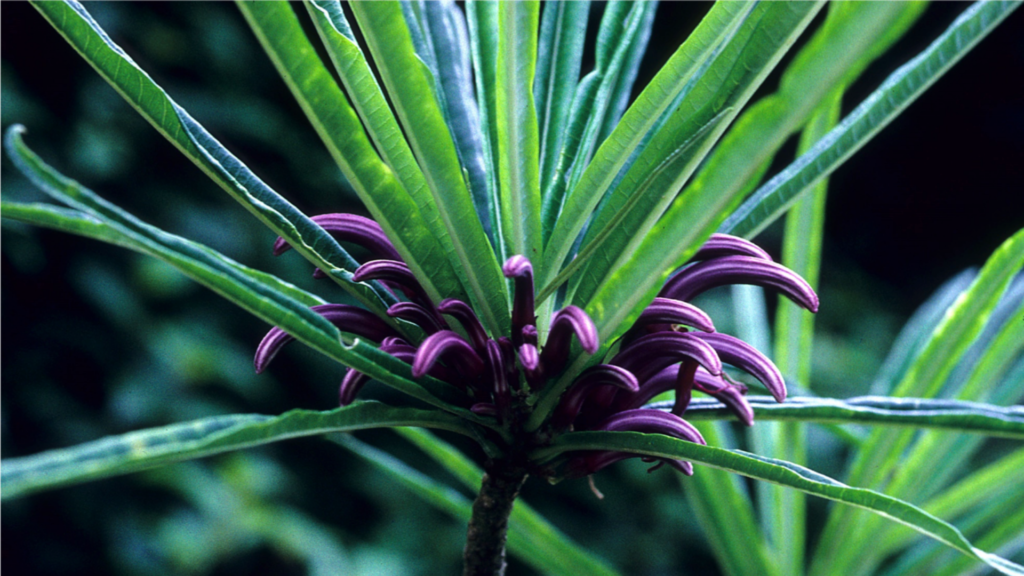
Hāhā (Cyanea kuhihewa) discovery
First discovered by NTBG botanists in 1991, a Kauaʻi species of hāhā (Cyanea kuhihewa) was nearly lost in the aftermath of Hurricane ʻIniki. Not only did ʻIniki destroy portions of the native forests in Limahuli Valley where the plant was discovered, it was followed by an influx of invasive species. The last known Cyanea kuhihewa died in 2003 as a result of these pressures but was rediscovered in 2017 in a nearby valley. NTBG botanists collected over 7,000 seeds from the mother tree in this small population before it died earlier this year.
In 2022, NTBG partnered with Lyon Arboretum to propagate a batch of Cyanea kuhihewa trees. Combined with efforts at our own Conservation Nursery on Kauaʻi, 60 trees were propagated and twelve outplanted. The remaining trees are ready to go out later this year. To put an exclamation point on this exciting news, a team of botanists from NTBG, The Nature Conservancy and the Plant Extinction Prevention Program discovered a new wild population in July of 2022 increasing the number of known wild individuals to four. This focused work and collaboration with conservation partners is bringing the species back from the brink of extinction.
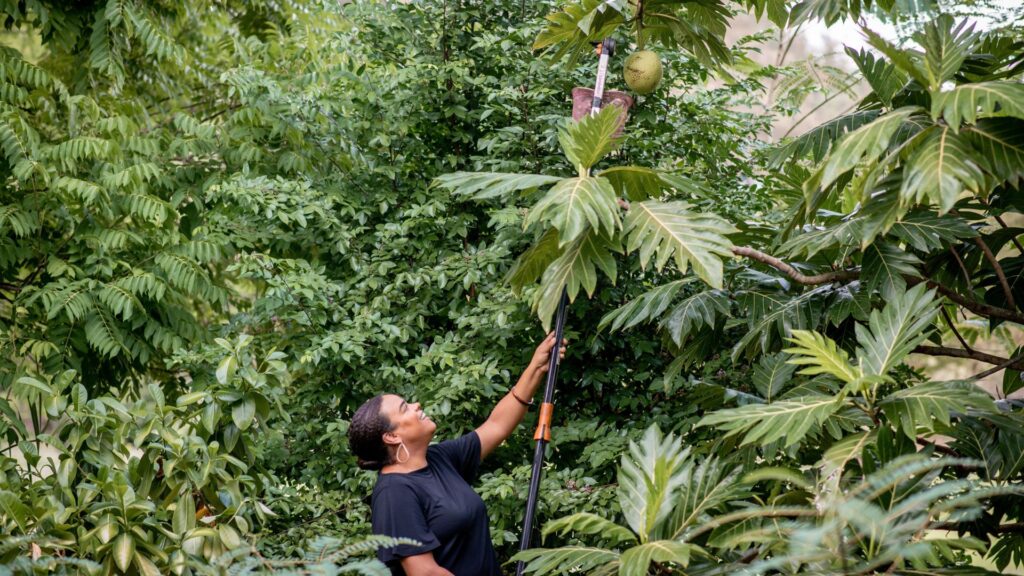
Breadfruit Institute Coordinator, Noel Dickinson, harvesting breadfruit
The Regenerative Organic Breadfruit Agroforestry project (ROBA) was established in 2017 at our McBryde Garden on Kauaʻi. On Kauaʻi, over 90% of our food is imported from off-island, leaving the island vulnerable to food shortages. ROBA was started as a way to address food insecurity both locally and throughout the tropics through research on best practices and education.
With an increase in diversity of cultivated plants throughout ROBA’s five years, staff has seen a decrease in weeds. Less time is spent weeding and mowing has decreased from two to three times per week at the start of the project to just once or twice a month. As a result, more time can be dedicated to research, crop harvest, and education. Over 17 tons of produce has been donated to Kauaʻi nonprofits that serve communities island wide and we continue to share what we learn with community members, students, and volunteers.

During an expedition into Waihoʻi valley, the Kahanu team visited a shrinking banana patch thought to be planted by Kahuʻoi, a legendary Hawaiian farmer of ancient times. The variety, suspected to be ʻIholena Kapuaʻ is now back at Kahanu Garden, joining our banana collection. We are excited to preserve and better understand varieties like this that are part of moʻolelo kahiko (old stories) and thought to have helped people of East Maui during a time of famine.

Our seed bank safeguards rare and endangered Hawaiian plants for conservation. As part of this process, it’s vital to learn how to germinate seeds. That task can be challenging depending on the species. Koholāpehu (Dubautia latifolia), a member of Hawaiʻi’s famous Silversword Alliance with a uniquely vining habit, is one such plant. Collaborating with associate researcher Bruce Baldwin, our team was able to use a new technique to successfully germinate koholāpehu for the first time. Several plants are now growing in our Conservation Nursery!
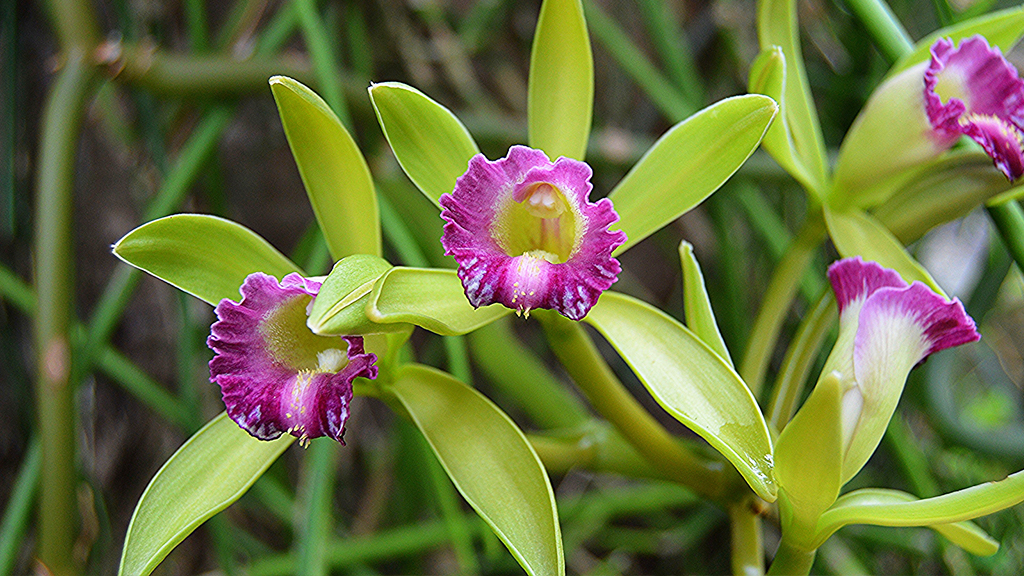
Leafless vanilla orchid (Vanilla barbellata)
Due to lost habitat and poaching, Florida’s native orchids are disappearing at an alarming pace. As part of our Orchid Initiative at The Kampong, we brought several rare species into cultivation at the garden and led outreach efforts to inspire the public to grow them. In conjunction with the University of Miami, we produced an instructional video and online resources that share how to grow endangered orchids from the Everglades in the home environment.